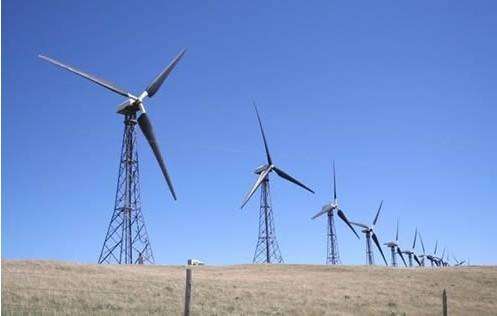The northern section of the Sino-Russian Eastern Gas Pipeline Project (Heilongjiang Heilongjiang-Jilin Changling) was put into operation on December 2 and the Northeast region became the first beneficiary. All circles have high hopes for its contribution to the overall revitalization of the Northeast. According to the reporter's observations, in order to "use up" more Russian gas in the Northeast and turn resource advantages into economic advantages, more investment stimulus and physical project support are needed. For the Northeast region where economic vitality is currently relatively insufficient, opportunities and opportunities Challenges coexist.
The China-Russia East Line natural gas pipeline starts from Heilongjiang Province, passes through Jilin, Inner Mongolia, Liaoning, Hebei, Tianjin, Shandong, and Jiangsu, and finally reaches Shanghai. The total length of the pipeline is more than 5,000 kilometers, covering the Northeast, the Bohai Rim, and the Yangtze River Delta. More than 400 million people in the region.
According to the “Thirteenth Five-Year Plan” energy plan issued by several provinces in Northeast China, Liaoning Province plans to exceed 15 billion cubic meters of natural gas consumption by 2020, accounting for 8% of the province's energy consumption structure; Jilin Province plans to consume natural gas by 2020 The amount reached 5 billion cubic meters, accounting for 6% of the province's total energy consumption; Heilongjiang Province plans to reach 9 billion cubic meters of natural gas consumption by 2020, accounting for 8% of the province's total energy consumption, and the total natural gas consumption of the three provinces is 290 One hundred million cubic meters. Compared with 2018's 14.6 billion cubic meters, the increase is about double.

The Sino-Russian Eastern Pipeline has been put into operation, so that the Northeast Province has the resource base conditions to achieve the above goals. However, some analysts believe that although the 2019 annual report has not yet been released, according to observations and understandings, the three northeastern provinces have not achieved the expected results in expanding the application of natural gas, and the time to achieve the goal of doubling the usage may be shifted backward. A research report released recently by Sinopec Natural Gas Branch and Beijing Shichuang Energy Consulting Co., Ltd. also believes that, according to the current status of regional natural gas market development, it is less likely that the Northeast region will achieve the “13th Five-Year” energy planning target on schedule.
Related analysis believes that in the past, natural gas resources in the Northeast region were singularly supplied and insufficiently driven by policies, resulting in a low degree of gasification. The commissioning of the northern and middle sections of the China-Russia East Line natural gas pipeline will stimulate and drive the large-scale growth of natural gas market demand in the Northeast region, ushering in a new period of rapid growth, which is expected to reach 28 billion cubic meters in the next few years. It is reported that 13 natural gas pipelines will be set up in Heilongjiang Province on the China-Russia Eastern Route. Heilongjiang Province is currently planning to construct a 3,000-km natural gas pipeline network within the province.
After the Sino-Russian Eastern Gas Pipeline is put into operation, it will become the main gas supply source in the Northeast. However, in the development and utilization of Russian gas resources, the challenges faced by the Northeast China mainly include the following aspects.
It takes a lot of investment and time to build infrastructure, including the construction of medium- and low-pressure natural gas distribution networks, underground gas storage, and the adjustment and transformation of equipment that can use natural gas. For several provinces in Northeast China that are relatively inadequate in economic vitality and lagging in GDP growth, investment channels and how to get a positive response from users are practical problems.
In the fields of power generation and chemical industry with strong ability to digest natural gas, it has not yet been learned that "heavyweight" projects related to Russian gas have been launched in the Northeast. With the accelerated construction of the middle and southern sections of the project, the radiation area of the pipeline will continue to expand to the Bohai Rim and the Yangtze River Delta, leaving little buffer time for the Northeast. If Russia ’s gas pipeline is accepted by the market because of its stable supply and price advantage, the Northeast may be passive in market transactions even though it has the advantage of being near the water.
Climate factors have caused seasonal imbalances in natural gas consumption, which are far more severe than those in the Bohai Rim and the Yangtze River Delta. Heating consumption is large in winter and there will be excess resources in summer. From the perspective of supply, the pipeline of Russian gas will be stable and will not be affected by the season. From the perspective of the market, domestic operators importing Russian gas will obviously want to find a stable buyer. Therefore, while accelerating the pace of market development in the Northeast, it is urgent to solve the problem of seasonal equilibrium. Among the solutions mentioned include the construction of gas storage facilities, the construction of summer projects as the flow of surplus resources, and the use of depleted mining areas in the Daqing Oilfield for storage.
The Northeast government pays great attention to the application of Russian gas. The Governor of Heilongjiang Province Wang Wentao and the Governor of Jilin Province Jing Junhai attended the opening ceremony of the pipeline at the first stop of the China Section of the China-Russia East Line Natural Gas Pipeline in Heihe City, Heilongjiang Province on the afternoon of the 2nd. The arrival of Russian gas as promised will inevitably drive the provinces in the northeast to accelerate the pace of "gasification of the northeast".




